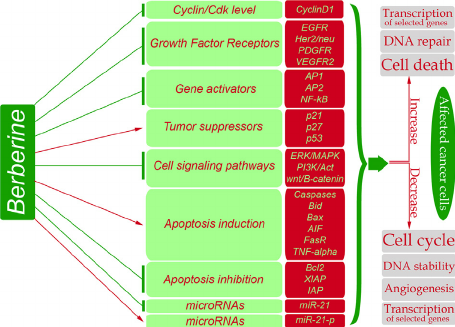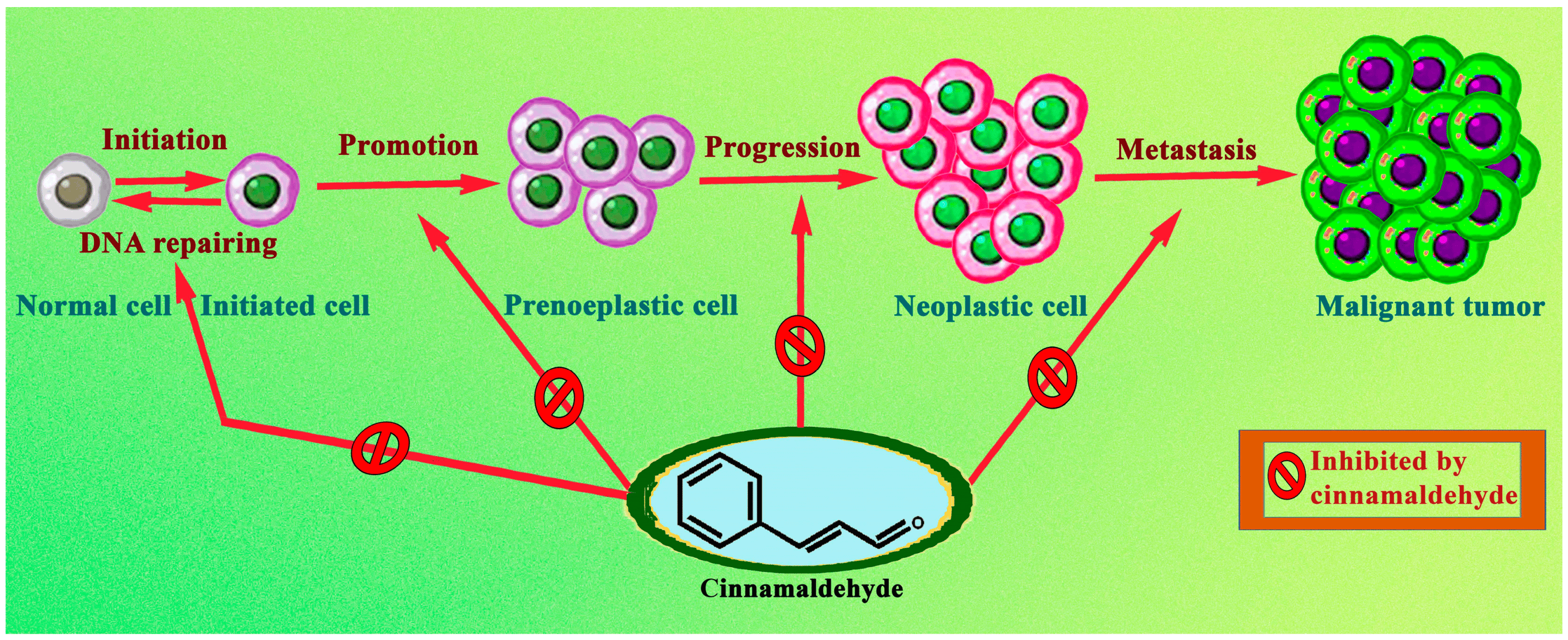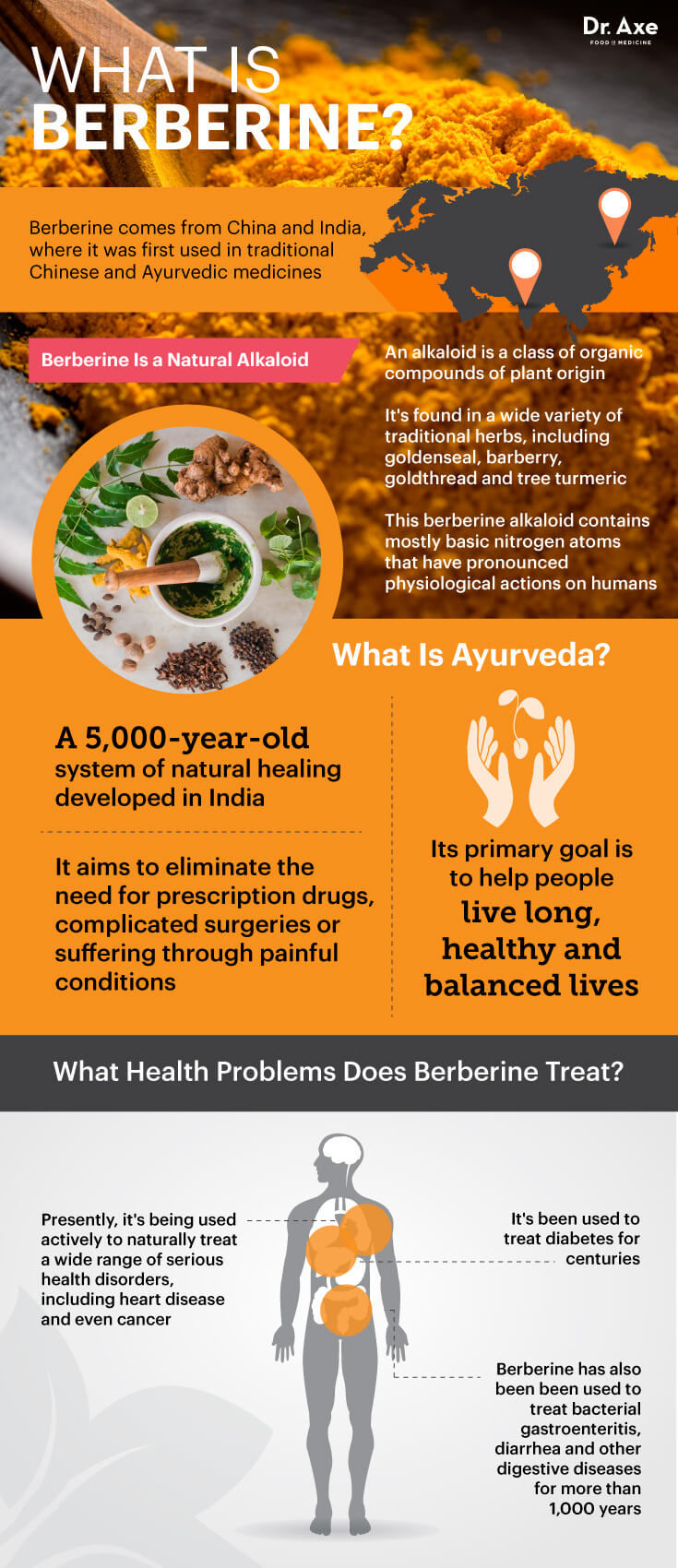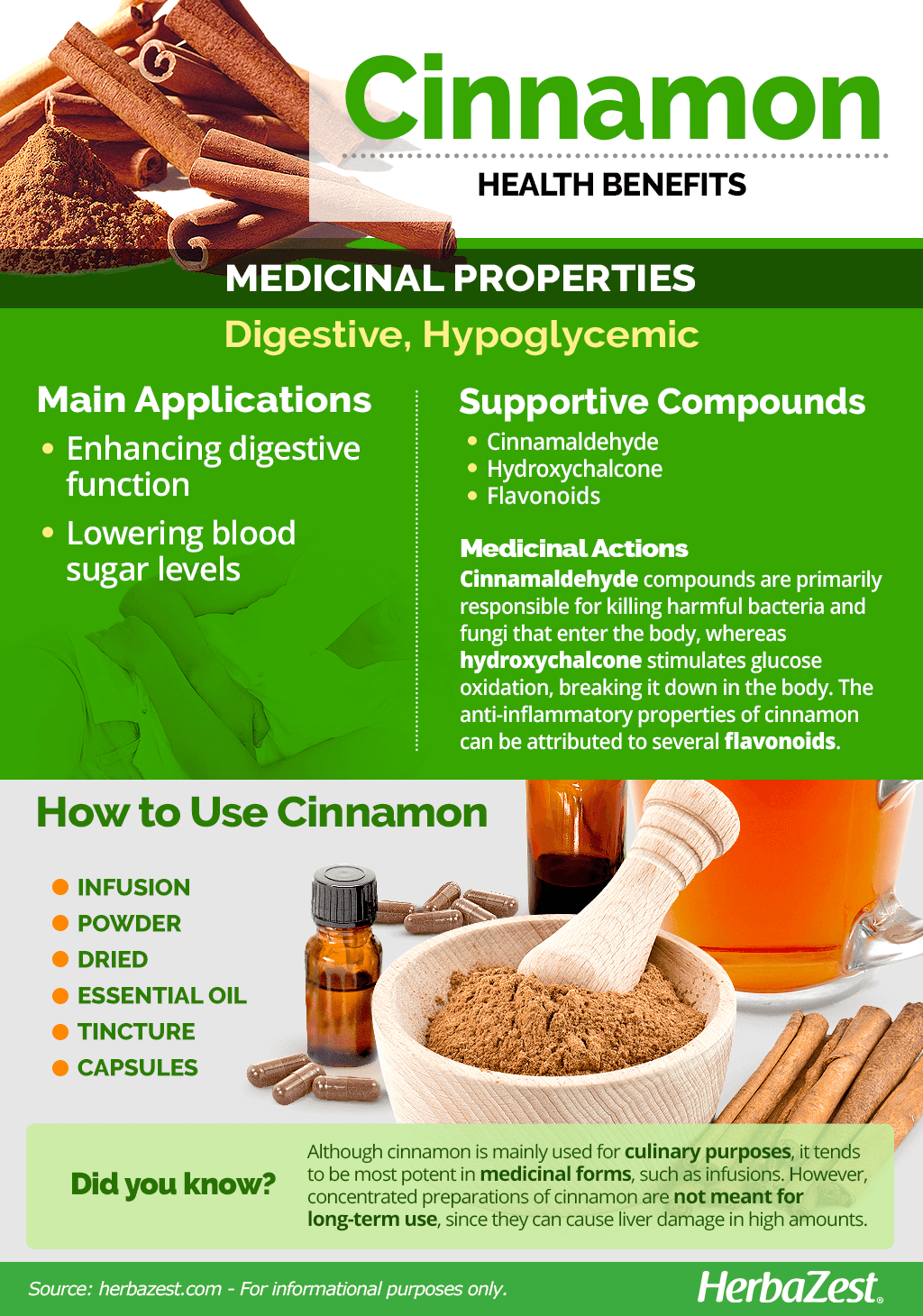
Cancer remains a leading cause of death, worldwide, despite advances in early screening and patient care. Although systemic therapies exist, such as chemotherapy and hormone therapy, toxicity and side effects from such approaches often erode their appeal to patients suffering from cancer.1 Natural therapeutic approaches, which include botanical interventions, have been used for generations to prevent and/or treat many human diseases, to include cancer.1(76385)Thus, as a means of appreciating the utility of such botanicals, the following will consider berberine and cinnamaldehyde, and their effects upon cancer cells, in greater detail.

Tumor growth is often characterized by increased metabolic rates, increased angiogenesis, increased nutrient intake, and suppressed osmotic function. Therefore, it has been suggested that starving tumors of nutrients could be an effective strategy in slowing and/or suppressing cancer growth and proliferation.1(76385) Meng et al1(76386) stated that one particular pathway which could suppress cancer growth could be through increased expression of tumor suppressor liver kinase 1 (LKB1) by increasing expression of AMP-activated protein kinase (AMPK); a downstream effector of LKB1. Such activation of AMPK could be achieved through botanicals like berberine and cinnamaldehyde, as each constituent has been shown to activate said enzyme.2,3 Ultimately, the researchers hypothesized that fusing berberine and cinnamaldehyde could reduce cell nutrient intake, thereby starving malignant cells.

Meng et al1(76393) constructed their study by using 5-6-week old ICR mice which were fed standard chow and water on a regular basis. To induce malignant lung cell growth, mice were injected with urethane (600 mg/kg bodyweight, once a week for 10 weeks) and randomly divided into 6 groups (25 mice per group) which underwent treatment for 25 weeks: (normal; urethane/ control; urethane/berberine (100 mg/kg body weight); urethane/cinnamaldehyde (5 mg/kg body weight); urethane/combination (berberine: cinnamaldehyde = 20:1, 105 mg/kg body weight); urethane/JTW (2 g/ kg body weight)).1(76393) For clarity, JTW (Jiao Tai Wan) is a traditional combination of Rhizoma coptidis (the whole plant) and Cortex cinnamomi (bark of the plant) which was also included to assess its efficacy against other berberine/cinnamaldehyde combinations mentioned in the above section.1(76393) The following will consider results in greater detail.

At the conclusion of the study, interesting results were elucidated to include analysis of individual effects of berberine and cinnamaldehyde upon tumor cell proliferation; individually, berberine and cinnamaldehyde slightly reduced proliferation, while combining berberine/cinnamaldehyde suppressed the same.1(76389) Other compelling outcomes included that berberine and cinnamaldehyde, together, increased cell apoptosis more than either compound could as a stand-alone modality.1(76389) Regarding the effects upon AMPK, said enzyme was up-regulated in the presence of concomitant administration of berberine/cinnamaldehyde as well as reduced cell permeability and lowered ATP concentrations suggesting cancer cell starvation.1(76389) Inflammatory markers (IL-1, IL-6, HS-CRP, TNF- α) and oxidative stress (8OHDG) markers were also lower in the berberine/cinnamaldehyde groups compared to controls and urethane-only groups.1(76387) Such evidence suggests that fusing berberine and cinnamaldehyde produces favorable synergistic effects, which controls and suppresses malignant lung cell growth and proliferation.


In conclusion, cancer remains a leading cause of death, worldwide, despite advances in early screening and patient care. Although systemic therapies exist, such as chemotherapy and hormone therapy, toxicity and side effects from such approaches often erode their appeal to patients suffering from cancer. However, basic research with berberine/cinnamaldehyde using animal models has suggested their potential roles in managing lung cancer and malignant cell proliferation. As such, and with further research, said botanicals might eventually play a supportive role as an adjunct to conventional medical interventions.
References
1. Meng M, Geng S, Du Z, et al. Berberine and cinnamaldehyde together prevent lung carcinogenesis. Oncotarget. 2017;8(44):76385-76397. doi:10.18632/oncotarget.20059.
2. Turner N, Li JY, Gosby A, et al. Berberine and its more biologically available derivative, dihydroberberine, inhibit mitochondrial respiratory complex I: a mechanism for the action of berberine to activate AMP-activated protein kinase and improve insulin action. Diabetes. 2008; 57:1414–1418. doi:10.2337/db07-1552.
3. Huang B, Yuan HD, Kim DY, et al. Cinnamaldehyde prevents adipocyte differentiation and adipogenesis via regulation of peroxisome proliferator- activated receptor-γ (PPARγ) and AMP-activated protein kinase (AMPK) pathways. J Agric Food Chem. 2011; 59:3666–3673. doi: 10.1021/jf104814t.
-Michael McIsaac
